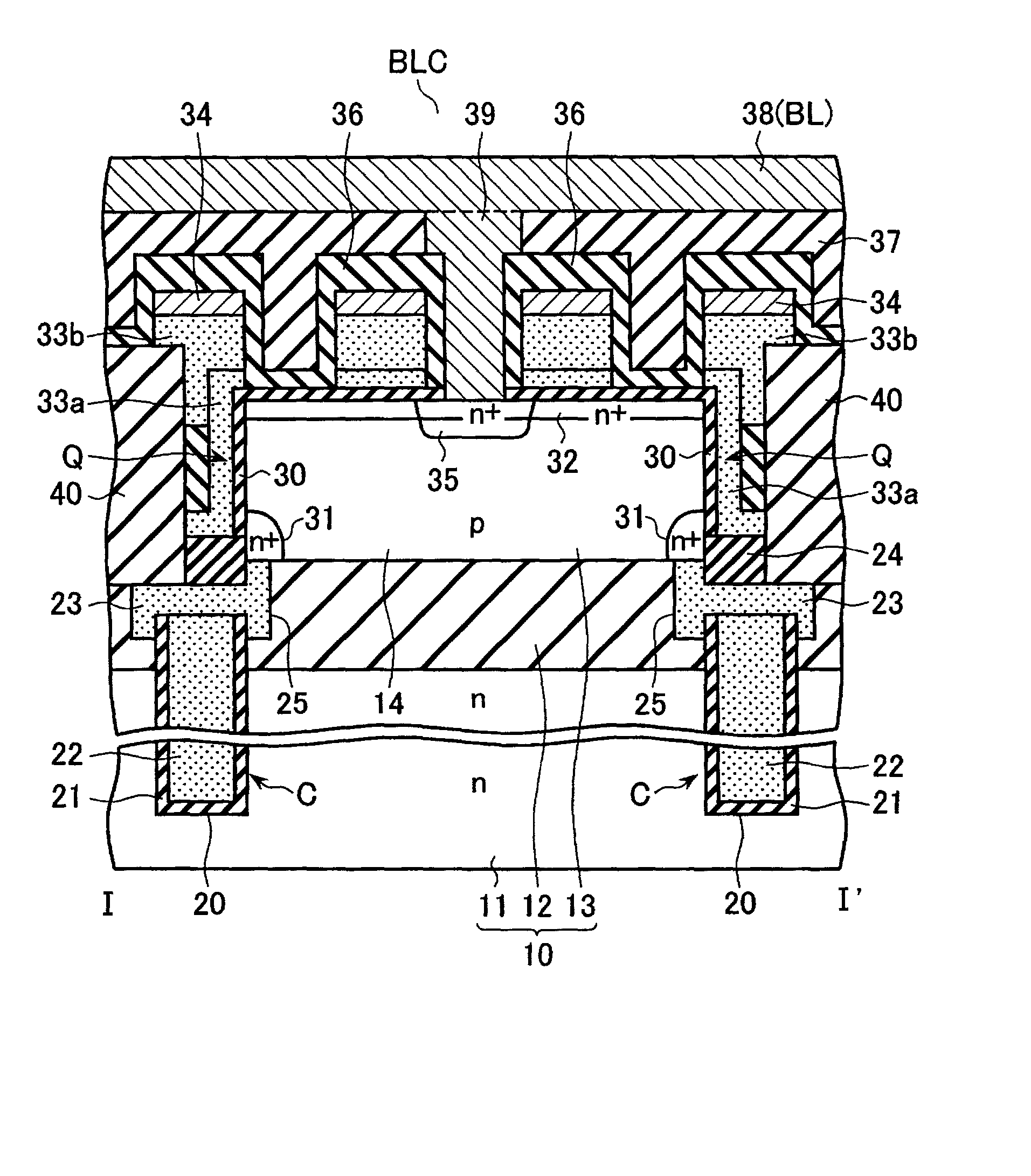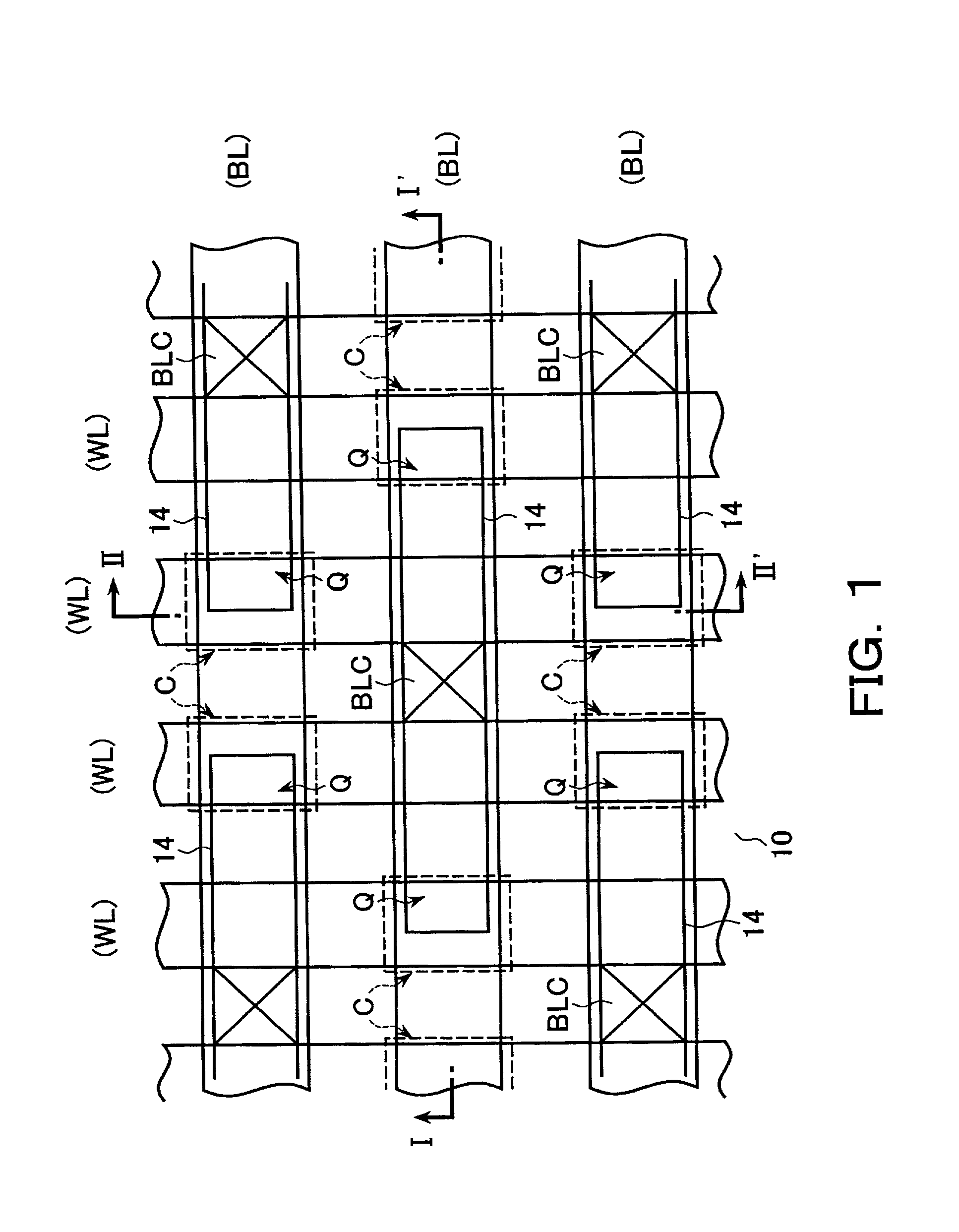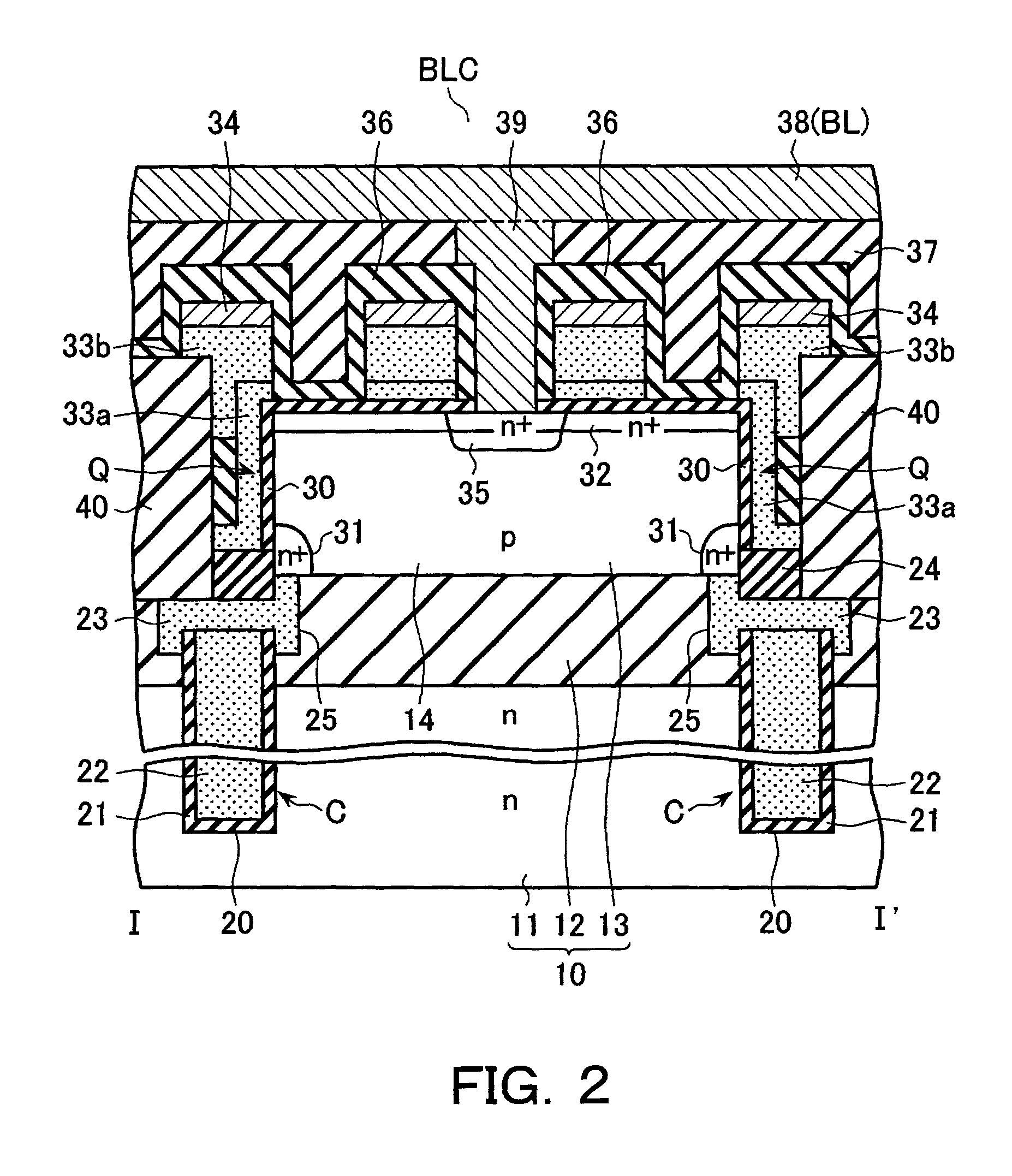Semiconductor device and method of fabricating the same
a semiconductor and device technology, applied in the field of high-integrated semiconductor devices, can solve the problems of dram cells degrading in operation margins, unable to achieve the required capacitance, and unable to meet the requirements of capacitance,
- Summary
- Abstract
- Description
- Claims
- Application Information
AI Technical Summary
Problems solved by technology
Method used
Image
Examples
embodiment 1
[Embodiment 1]
[0038] Referring now to FIG. 1, there is shown a plan view of main part of a trench-capacitor-based dynamic random access memory (DRAM) cell array with half-pitch folded bit line structure in accordance with one embodiment of this invention. Also see FIGS. 2 and 3, which depict cross-sectional views of the structure of FIG. 1 as taken along lines I-I' and II-II' respectively.
[0039] The illustrative embodiment is arranged to employ a silicon-on-insulator (SOI) substrate 10 as an element substrate. This SOI substrate 10 includes a single-crystalline silicon substrate 11 of a selected conductivity type-here, n type. The n-type silicon substrate 11 has its surface on which a silicon oxide film 12 is formed, with a p-type single-crystalline silicon layer 13 formed on the silicon oxide film 12 to thereby make up the multilayer structure of SOI substrate 10. It is necessary that the silicon layer 13 has a predetermined thickness in view of the fact that this layer's thickness...
embodiment 2
[Embodiment 2]
[0058] Turning now to FIG. 10, there is shown a cross-sectional view of a trench DRAM cell array structure in accordance with another embodiment of this invention, in a way corresponding to that of the previously discussed embodiment of FIG. 2. Its plan view is the same as that shown in FIG. 1. A difference of the FIG. 10 embodiment from the above-stated embodiment is that the buried strap 23 is designed to have a two- or "double"-layer structure that consists essentially of n-type polysilicon films 23a, 23b stacked over each other. A first one of these two layers, i.e. polysilicon (poly-Si) film 23a, is fabricated prior to formation of the width-increased groove portion 25 in such a manner such that it is multilayered on a sidewall of the groove 20 at upper part than the storage electrode 22 of capacitor C in the state that no capacitor insulation films are present. And, after having formed the width-increased groove portion 25, the remaining, second-layered poly-Si f...
embodiment 3
[Embodiment 3]
[0070] Referring next to FIG. 18, there is shown a sectional view of a trench DRAM cell array structure in accordance with yet another embodiment of this invention, in a way corresponding to that of the previously stated embodiment of FIG. 2. Its plan view is the same as that shown in FIG. 1. The FIG. 18 embodiment is different from the above-stated embodiment in that i) the width-increased groove portion 25 is formed over the entire thickness range of the silicon oxide film 12, ii) the capacitor C's storage electrode 22 is buried so that its upper surface is located at the width-increased groove portion 25 and thus has an increased area, and iii) its overlying buried strap 23 is so formed as to come into contact with only the bottom surface of p-type silicon layer 13.
[0071] A fabrication process of the FIG. 18 structure will be described with reference to FIGS. 19 to 24. As shown in FIG. 19, after having formed grooves 20 for capacitor use by RIE methods, oxide film e...
PUM
 Login to View More
Login to View More Abstract
Description
Claims
Application Information
 Login to View More
Login to View More - R&D
- Intellectual Property
- Life Sciences
- Materials
- Tech Scout
- Unparalleled Data Quality
- Higher Quality Content
- 60% Fewer Hallucinations
Browse by: Latest US Patents, China's latest patents, Technical Efficacy Thesaurus, Application Domain, Technology Topic, Popular Technical Reports.
© 2025 PatSnap. All rights reserved.Legal|Privacy policy|Modern Slavery Act Transparency Statement|Sitemap|About US| Contact US: help@patsnap.com



